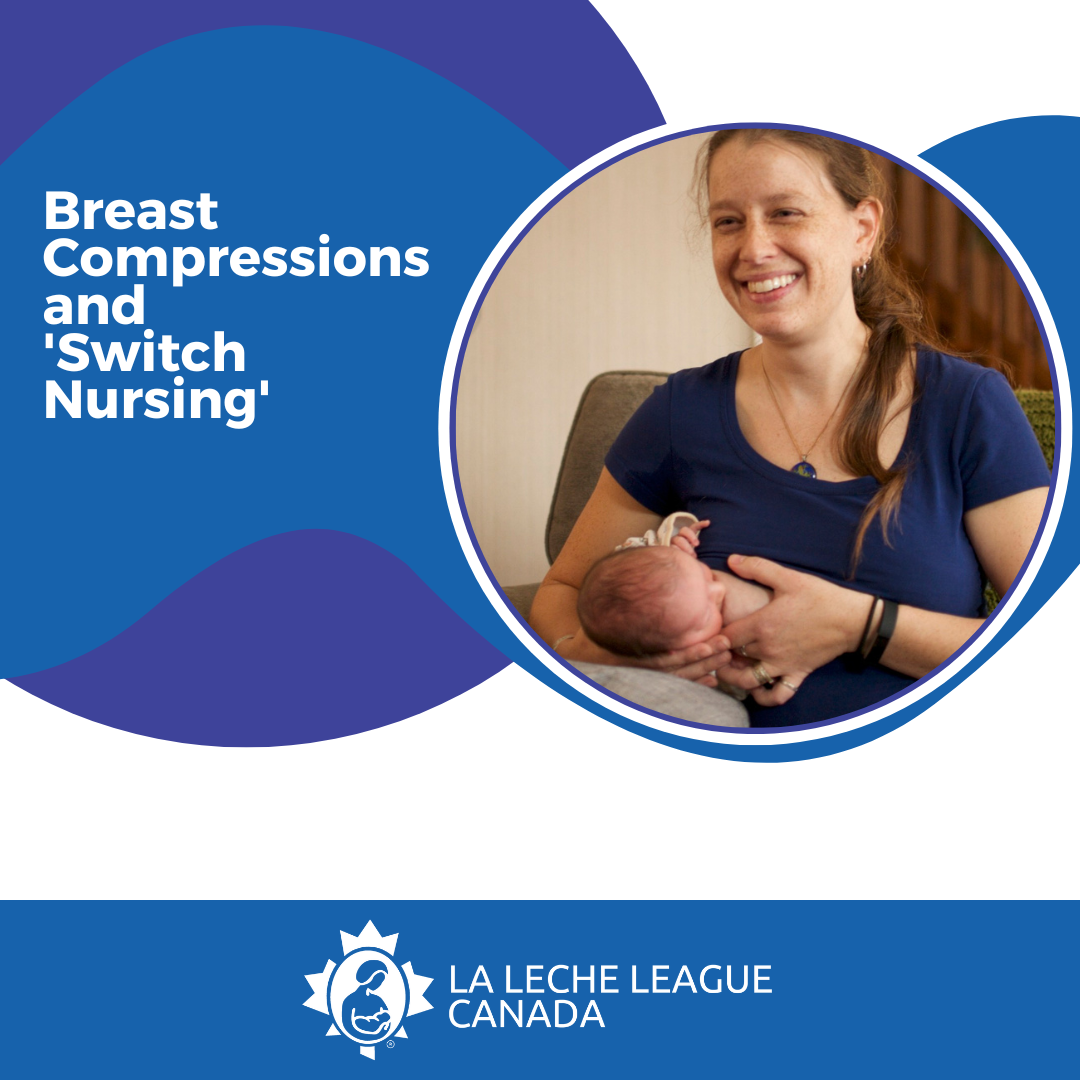
Breast compressions and “switch nursing” are two techniques that can help keep your baby nursing longer. This usually means your baby will drink more milk. They are often used when a baby is sleepy or not gaining weight well. They can also be used when a baby loses interest or gets frustrated by a slower milk flow.
Breast compressions are done when your baby is sucking but is not actively swallowing. Grasp as much of the breast as you can with your whole hand. You can do this by placing your hand over the top of your breast or by placing your fingers under your breast with your thumb on top. This will push milk to the nipple and into your baby’s mouth. Do not squeeze so hard that it hurts. Your baby should start to swallow after a few moments. Hold the compression until your baby stops swallowing. When the swallowing slows down again, release the compression and move your hand to a slightly different place on your breast. When your baby starts sucking again, squeeze your breast again. Repeat the squeezing and releasing until it no longer works. Then offer your baby the other breast.
You can also try ‘switch nursing’. When your baby’s sucking slows down or stops, slip a finger in the corner of your baby’s mouth to break the suction. Switch sides and offer the other breast. Your baby should nurse more vigorously as your milk flows with the letdown (milk ejection reflex). When your baby’s sucking slows again, switch back to the first breast. Keep repeating this until your baby seems satisfied. Emptying your breasts by switching back and forth increases milk flow which will increase your milk supply. For more information see Low Milk Production.
You can combine breast compression and switch nursing or do just one or the other. You will see what works best for your baby.
Good information and support can make a big difference in your breastfeeding journey. Your nearest La Leche League Canada Leader is here to help.
Please consider supporting LLLC.
Updated August 2024
